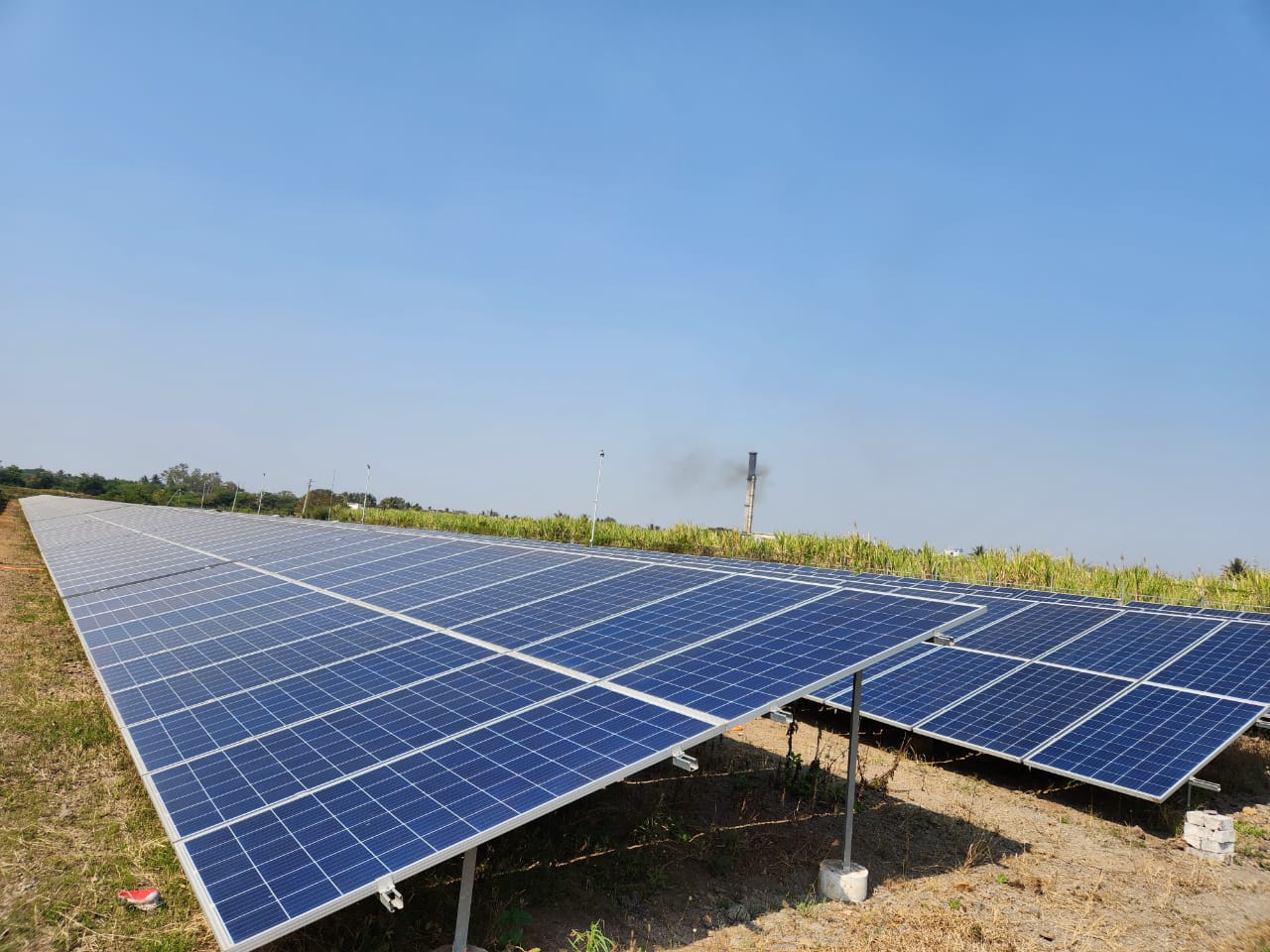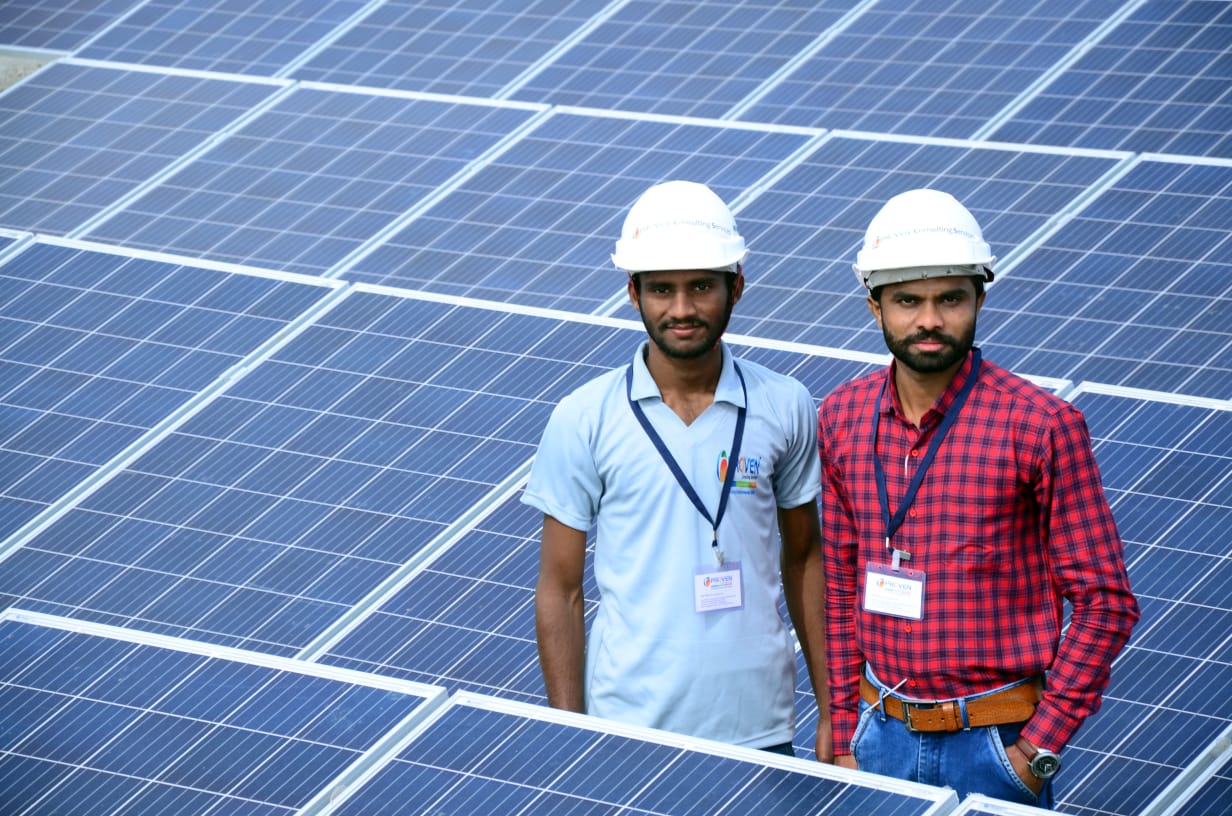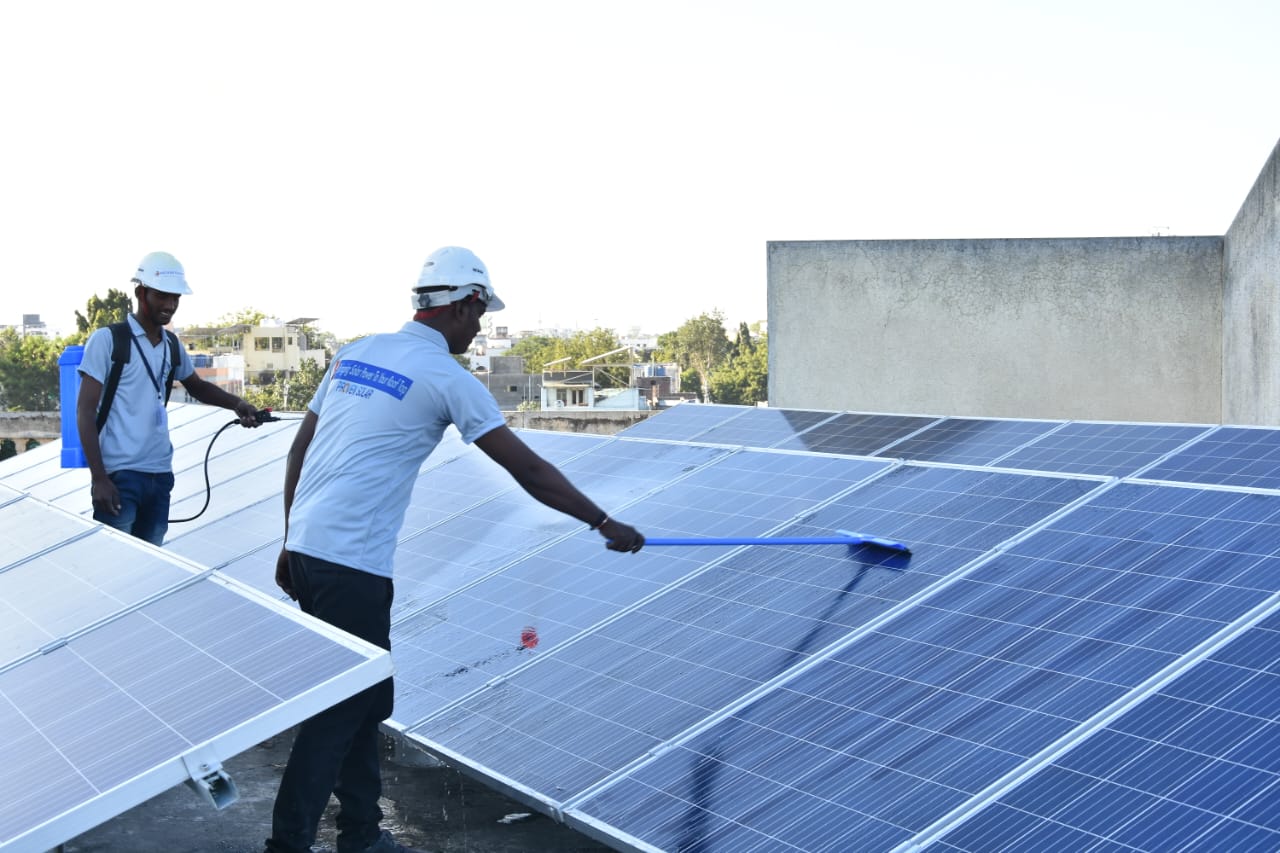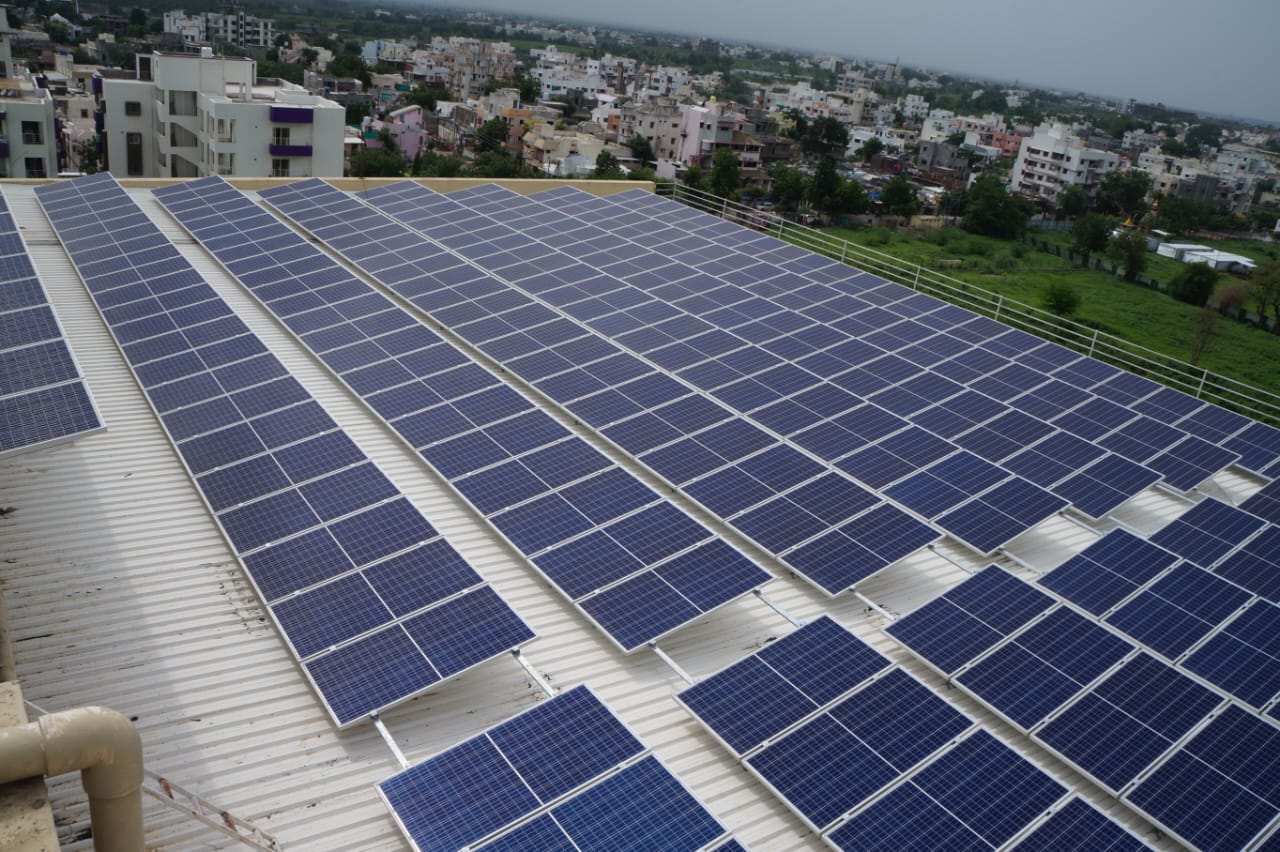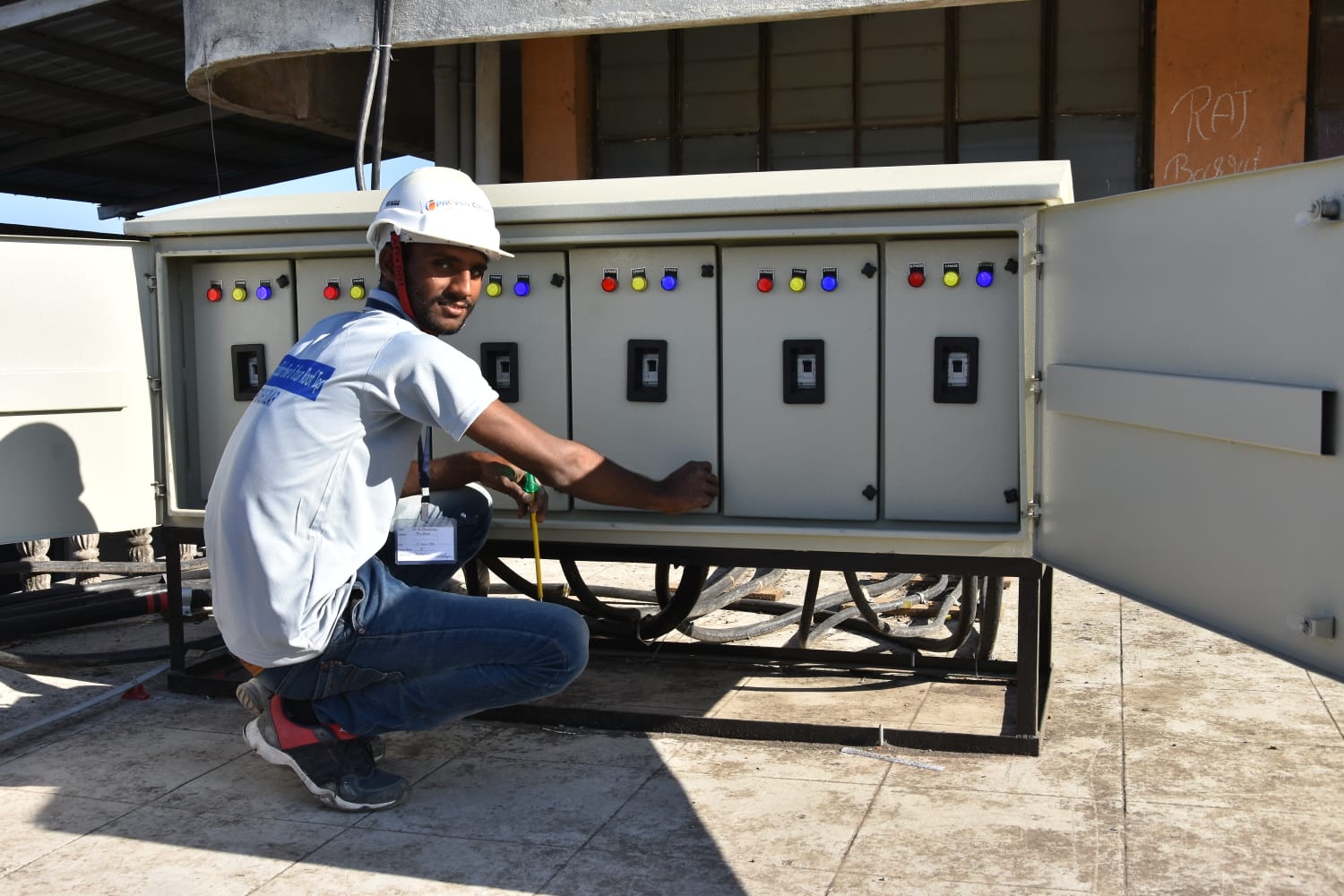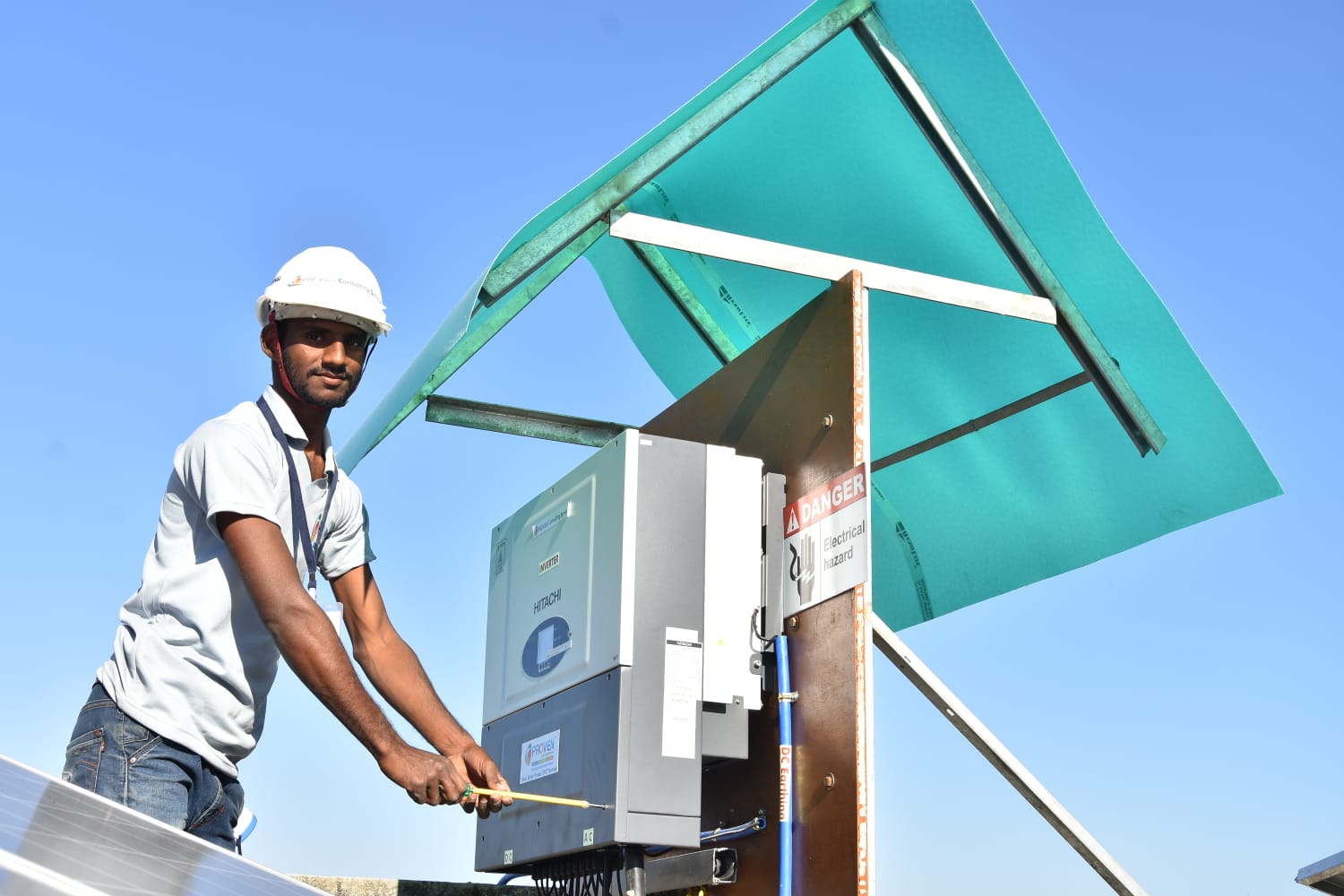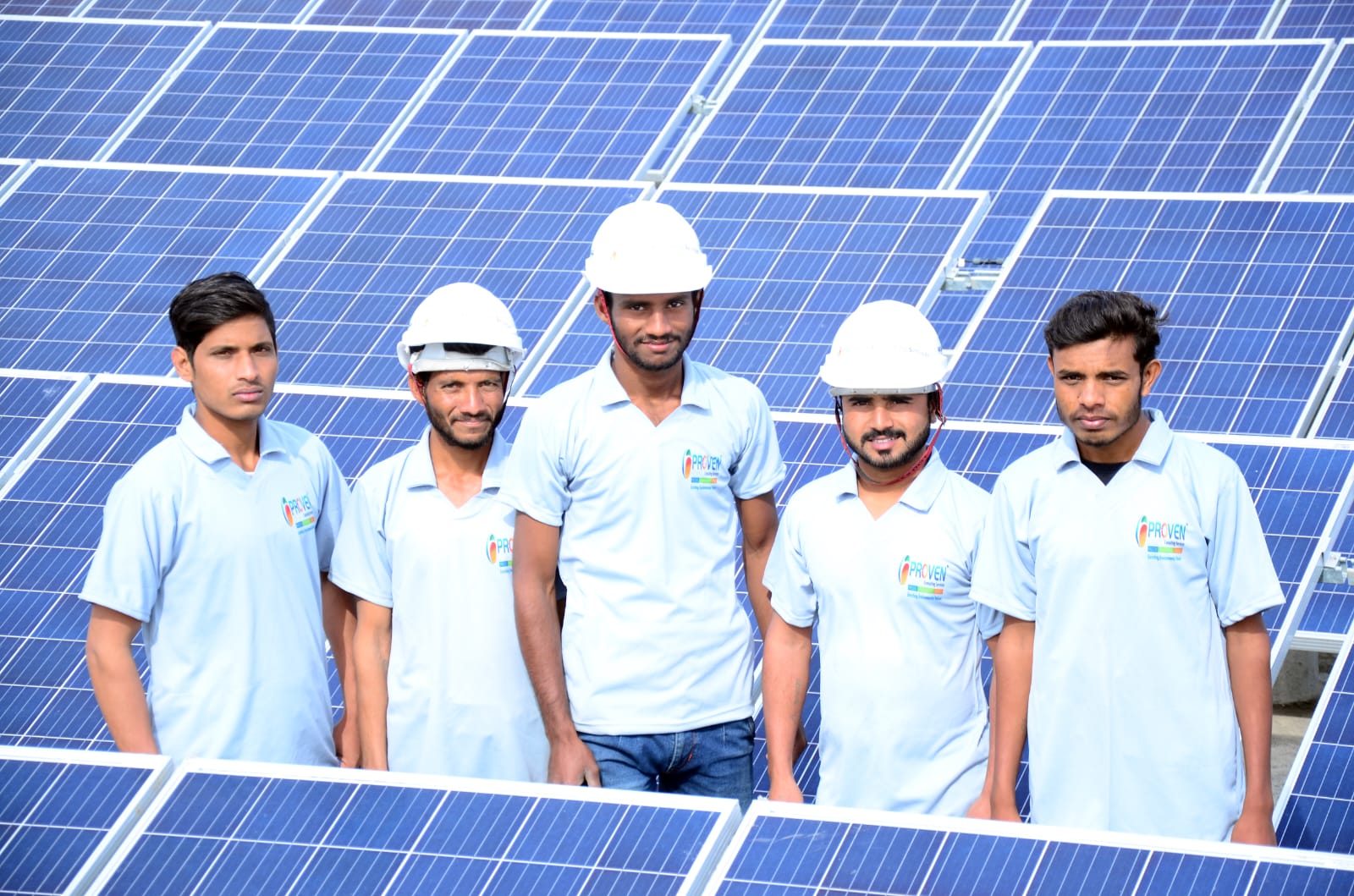Roofs Top Solar Photovoltaic
Power Plant
Main objective of a site survey is to gather customer details, site measurements and detailed requirements for solar installation project. A solar project site survey should answer following – Is there enough space for solar PV installation? Site survey is important primarily because it helps and identify all potential problems in time and make a plan of action in accordance with the information collected. Site surveys are indispensable to solar PV installation projects. Let’s look at site survey best practices, checklist and formats for solar site survey report.
1. Objective of site survey
2. Site survey Checklist
3. Site survey form template
4. Carrying out site survey
5. Preparing the report
6. Site survey report format.
Collect Electricity bills. Note all electrical appliances and their power consumption and time to work out plant capacity.
Roofs Top Solar Photovoltaic Power Plant (SPVPP)
Roofs may be: Flat Concrete Terrace, Flat concrete Sloppy, Corrugated Tin Shed, Mud Tile sloppy, Industrial Sloppy and Arc Tin Sheds etc.
Ground Mounted Solar Photovoltaic Power Plant (SPVPP)
Land may be plain open, sloppy, Hilly, Stony. All lands required development for water drainage, removal of trees and vegetation and approach roads, fencing.
Car Port
Attractive designs are provided for installation of Solar Plant on top.
Floating Plants on Water
Stagnated water of Dams, Lakes, are being used for Solar Power installation. This water surface area is actually shadow free hence ideal. Technically Floating Solar plants Generate more power and helps to lower down open water evaporation losses.
Plant Installation over Canals
Big canal’s length is very long. Instead of using open land for installation the top surface of Canals can be utilized for Solar Plant Installation. Plant installed on Canals provide higher generation efficiency and help to reduce water evaporation.
SPVPP Engineering & Consulting
Services
Design Inputs and Drawings
Before project execution all design drawings need to be prepared. Structural, Civil, Electrical single line diagrams, LA and Earth pit locations helps to installation and execution. Design civil foundations, gutters, piles, Room, road, boundary walls and fencings, gate with all details and specifications etc.
Data Analysis and Technical Feasibility
Advance action must be initiated on Acquisition of land, securing essential clearances from Electrical supply authority, identify technical collaborators/consultants, Arranging infrastructure facilities, Preliminary design and engineering requirements.
Scope of Supply
Stagnated water of Dams, Lakes, are being used for Solar Power installation. This water surface area is actually shadow free hence ideal. Technically Floating Solar plants Generate more power and helps to lower down open water evaporation losses.
Electricals Design and SLD Electricity Flow
Big canal’s length is very long. Instead of using open land for installation the top surface of Canals can be utilized for Solar Plant InstAfter initial Survey and data collection one has to work out the feasible Solar Plant Capacity kWp based on consumptions and statutory requirements. Solar utility projects are typically a combination of both low voltage DC and medium voltage AC electrical systems. Bridging the design details from DC to AC and creating cohesion throughout the design is one of the unique features. There is an exciting trend towards offering solar array wiring of up to 1500 Volts DC on ground-based systems and 1000 Volts DC on rooftop solar systems. Design and draw single line wiring of DC along with conduiting and Cable trays. Include AJB, MJB, DCDB with suitable fuses and SPDs. In ground mounted plant design adequate wide and deep trenches with suitable covering of the trench. allation. Plant installed on Canals provide higher generation efficiency and help to reduce water evaporation. Fix the final suitable locations of AJB, MIB, DCDB, Inverter, ACDB and hook up the AC supply to existing input supply of Client. Design adequate capacity of Net Metering system and apply to Power Supply Authority for statutory clearances and approvals before installation completes. Also design layout for LA system along with layout and details, the LA surge must be grounded into ground. Some time looking to building size and Land orientation more than one LA can be designed. The DC earthing is also important therefore prepare DC earthing layout along with the material specifications. The earthing strip/Wire/ Bar may be of Copper, GI, AI must be connected to all Modules, structure, AJB/MJB/DCDB, and ground in soil through DC earth pit. Design AC earthing separate and it must be be connected to AC out put side of Inverter, ACBD and Control Panel, Metering systems and ground in to AC earth Pit.
SPVPP Engineering & Consulting Services
Site Survey
. Design Inputs and Drawings
Before project execution all design drawings need to be prepared. Structural, Civil, Electrical single line diagrams, LA and Earth pit locations helps to installation and execution. Design civil foundations, gutters, piles, Room, road, boundary walls and fencings, gate with all details and specifications etc.
.Data Analysis and Technical Feasibility
Advance action must be initiated on Acquisition of land, securing essential clearances from Electrical supply authority, identify technical collaborators/consultants, Arranging infrastructure facilities, Preliminary design and engineering requirements.
. Scope of Supply
Stagnated water of Dams, Lakes, are being used for Solar Power installation. This water surface area is actually shadow free hence ideal. Technically Floating Solar plants Generate more power and helps to lower down open water evaporation losses.
. Electricals Design and SLD Electricity Flow
Big canal’s length is very long. Instead of using open land for installation the top surface of Canals can be utilized for Solar Plant InstAfter initial Survey and data collection one has to work out the feasible Solar Plant Capacity kWp based on consumptions and statutory requirements. Solar utility projects are typically a combination of both low voltage DC and medium voltage AC electrical systems. Bridging the design details from DC to AC and creating cohesion throughout the design is one of the unique features. There is an exciting trend towards offering solar array wiring of up to 1500 Volts DC on ground-based systems and 1000 Volts DC on rooftop solar systems. Design and draw single line wiring of DC along with conduiting and Cable trays. Include AJB, MJB, DCDB with suitable fuses and SPDs. In ground mounted plant design adequate wide and deep trenches with suitable covering of the trench. allation. Plant installed on Canals provide higher generation efficiency and help to reduce water evaporation. Fix the final suitable locations of AJB, MIB, DCDB, Inverter, ACDB and hook up the AC supply to existing input supply of Client. Design adequate capacity of Net Metering system and apply to Power Supply Authority for statutory clearances and approvals before installation completes. Also design layout for LA system along with layout and details, the LA surge must be grounded into ground. Some time looking to building size and Land orientation more than one LA can be designed. The DC earthing is also important therefore prepare DC earthing layout along with the material specifications. The earthing strip/Wire/ Bar may be of Copper, GI, AI must be connected to all Modules, structure, AJB/MJB/DCDB, and ground in soil through DC earth pit. Design AC earthing separate and it must be be connected to AC out put side of Inverter, ACBD and Control Panel, Metering systems and ground in to AC earth Pit.
SPVPP Project Management Services
In project management Material, Equipment, systems procurement needs to be defined to match project requirements. First fix the required quantities, specifications, quality standards, and in case of any customer requirement and budgetary costing. Before procurement let us have comparative cost analysis and availability along with supply period.
1. Project Pre Requisites
a. Advance action must be initiated on Acquisition of land, securing essential clearances from Electrical supply authority, Identify technical collaborators/consultants.
b. Arranging for infrastructure facilities, Preliminary design and engineering requirements.
c. Technical feasibility, can be described as the formal process of assessing whether it is technically possible to implement a project. Before launching a new offering or taking up a client project, it is essential to plan and prepare for every step of the operation. Technical feasibility helps determine the efficacy of the proposed plan by analyzing the process, including tools, technology, material, labor and logistics. Being a solar power, we have to check Electrical consumption, connected load, section load, type of connection obtained to work out required Solar plant capacity and electrical feasibility.
2. Contracts
3. Resource Management
4. Cost to Project
5. Tools and Hardware’s
6. BOM
7. Bought out Items
8. Mfg. Items
Once all specifications, design drawings are ready immediately manufacturing process of Structure, all required equipment, system’s mfg must be taken up and plan scheduling of receipt, dispatches and deliveries must be fixed. The first step to create a schedule for your solar project is to start listing all the work that needs to be done.
This would include all the project activities and important milestones. The sequence of all your important milestones will constitute the project roadmap. Having a project roadmap helps in quickly understanding. Optimize schedules for field workers and clients, project timelines, and more. What is the advantage to using field service management software (FSM)? What key features should you look for? What are the benefits to both your field technicians and office employees? How does FSM software assist with managing work orders, service requests, time tracking, scheduling, and dispatch? Increase communication and transparency between field teams, office staff, and customers. Automate workflows, project templates, and task assignments. Streamline communication, data, documents, and schedules. Reduce manual systems, data entry, and redundancies in software tool overlap. Improve visibility and operations by collecting, tracking, and analyzing crucial data such as job completion times, field notes, and more Create more time for field teams to focus on in-field work by removing repetitive and manual admin processes.
9. Vendor identification, Audit, Selection and Development
Vendor must have adequate facilities, competent, faithful and reliable to full fill the desired qualities and requirements. Carry out vendor Audit as and when required. Always keep two to three vendors in your list for timely supply. Identify relevant, competent and reliable suppliers for resources planning and management. List out all required resource and human resource for better management. Adequate human resource force must be developed for timely completion and better management of the project. Finance is also main resource hence a sustainable financer must be listed for timely completion of project and better resource management.
10. Negotiations
11. Purchase order
12. Planning & Scheduling
12. Supply Contracts and Agreements
14. Compliances
15. Payments as per terms and conditions defined in Work order.
SPVPP Installation & Commissioning Services
A. Ground Mount SPVPP Installation
1. Site Infrastructure:
2. Land Development, water drainage and Gutters:
3. Approach Roads:
4. Material handling, Transport and Storage at site
The project site must have approachable roads where the Men, Vehicles can be easily reach along with project materials. There must be adequate storage Room/facility to store regular and critical project materials at site. Sometime before project its construction is required.
5. Boundary Walls and Fencings
6. Pile foundations
7. Cable Trenches
8. Electrical Room Construction at Site
9. Structure Mfg. and Fabrication, Welding at Site wherever required:
Once all specifications, design drawings are ready immediately manufacturing process of Structure, all required equipment, system’s mfg must be taken up and plan scheduling of receipt, dispatches and deliveries must be fixed. The first step to create a schedule for your solar project is to start listing all the work that needs to be done.
This would include all the project activities and important milestones. The sequence of all your important milestones will constitute the project roadmap. Having a project roadmap helps in quickly understanding. Optimize schedules for field workers and clients, project timelines, and more. What is the advantage to using field service management software (FSM)? What key features should you look for? What are the benefits to both your field technicians and office employees? How does FSM software assist with managing work orders, service requests, time tracking, scheduling, and dispatch? Increase communication and transparency between field teams, office staff, and customers. Automate workflows, project templates, and task assignments. Streamline communication, data, documents, and schedules. Reduce manual systems, data entry, and redundancies in software tool overlap. Improve visibility and operations by collecting, tracking, and analyzing crucial data such as job completion times, field notes, and more Create more time for field teams to focus on in-field work by removing repetitive and manual admin processes.
10. Vendor identification, Audit, Selection and Development
As Solar plant life is 25 years the designing of sustainable and suitable to particular location, the structure for PV module mounting must be strong to take module load, wind and storm pressure loads more than 180kMPh. For coastal salty areas, humid conditions and chemically corrosive areas suitable MOC must be selected. There is MS, MS Painted, GI, Hot dipped GI, Anodized AI, SS316, FRP structures are in use.
B. Roof Top SPVPP Installation :
1. Plant Structure fitting.
2. PV distribution
3. PV fitting
4. Cable Laying, Ducting, Termination and Inter connections
5. Cable Tray laying
6. Inverter fitting, Distribution Control Panel
7. LA Installation
8. Earthing fittings and Earthing pit
9. Provide Net Work for Online Monitoring system
10. Commissioning.
11. QA & INSPECTION
12. Checking and Inspection
13. Verify Compliances
14. Check connections
15. Volt and Current Measurement
SPVPP Liasoning & Compliances Services
In project management Material, Equipment, systems procurement needs to be defined to match project requirements. First fix the required quantities, specifications, quality standards, and in case of any customer requirement and budgetary costing. Before procurement let us have comparative cost analysis and availability along with supply period.
1. Application to MSEDCL for Solar Power Plant connection Approvals.
2. Net Metering Testing and approvals.
3. Installation, Connection of Net Meter.
4. PWD ELECTRICAL.
5. MNRE SUBSIDY, IF APPLICABLE.
SPVPP Operation & Maintenance Services
Operation and Maintenance Services to:
A. Preventive B. Comprehensive
a. Own Installed Project Support, 1year free Comprehensive Maintenance Contract (CMC).
b. Third Party Annual Maintenance Contract (AMC) and CMC
c. Redevelopment and Modifications in Third Party.
d. Third Party dismantling and re installation & Commissioning.
Module cleaning and Scheduling
1. Operational SOPs and PV Module Cleaning SOPs
2. Maintenance Check list
3. Schedules
4. Unit Generation Monitoring and Analysis
5. Corrective and Preventive Maintenance Scheduling
6. Trainings
6. Spares and Storage
The fast growing Solar Power field and our Customer base demands well managed Operation and Maintenance Services to keep the plant at optimum performing condition at par with the needed expectation of the client and also the applicable regulations. We offer:
a) Preventive Maintenance (PM):
1. Routine inspection and servicing of equipment
2. Panel cleaning – At twice a month or depending upon the dust conditions
3. Vegetation Management – After rainfall and based on local conditions
4. DC & AC electrical sub system testing
5. Mechanical inspections
6. IV Curve Testing
7. Sensor Calibration
8. Security Systems
9. Documentation of events
10. Warranty Management
11. Diagnose faults through data mining
b) Condition-Based Monitoring (CBM)
1. Monitoring of equipment condition and plant operations on a real-time basis and addresses a potential problem at a very
2. Early stage to prevent downtime. This requires a robust plant performance monitoring system and Active Monitoring (Inverter Level).
c) Corrective Maintenance (CM) or Breakdown Maintenance (BM)
1. Repair of broken down equipment and is usually reactive.


